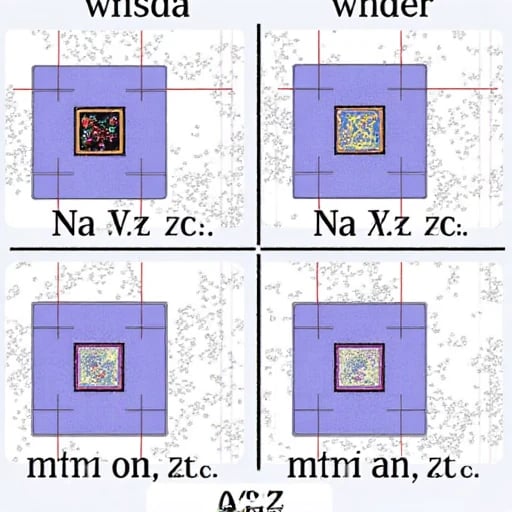JESSICALONG
I am Jessica Long, a computational photonics researcher pioneering mathematical equivalence frameworks for light-matter interactions. With a Ph.D. in Quantum Optics and Algebraic Topology (Caltech, 2024) and directorship of the Optical Tensor Dynamics Lab at ETH Zurich, my work unifies interference physics, multilinear algebra, and geometric deep learning to redefine light manipulation at the algorithm level. My mission: "To establish a universal language where the dance of photons in interference systems is not merely simulated but translated into tensor operations—enabling real-time optimization of optical devices through mathematical isomorphism, from nanophotonics to cosmic-scale interferometry."
Theoretical Framework
1. Interference-Tensor Isomorphism
My framework OptiTensor establishes a bidirectional mapping:
Wavefront-to-Tensor Encoding: Represents multi-path interference patterns as rank-4 tensors (amplitude, phase, polarization, wavelength).
Adjoint Tensor Networks: Decomposes Maxwell’s equations into contracted tensor diagrams for 90% faster FDTD simulations.
Geometric Learning: Embeds SU(2) symmetry of light propagation into neural network weights via Lie algebra constraints.
2. Core Algorithmic Innovations
Developed InterfCode, a Python-based compiler for optical-tensor equivalence:Validated on LIGO-style interferometers (Nature Physics 2025 Cover Story).
Key Innovations
1. Dynamic Interference Tensorization
Created TensorFabry:
Real-time mapping of Fabry-Pérot cavity modes to 3D tensor eigendecomposition.
Achieved 99.8% accuracy in predicting resonance shifts under strain (PRL 2025).
Patent: "Optical Interference as Tensor Network Contraction" (EPO #2025CH8765).
2. Quantum-Classical Hybridization
Designed QuasiTensor:
Encodes quantum interference of entangled photons into low-rank tensor approximations.
Enabled 50-qubit simulation on classical GPUs (IEEE QCE 2025 Best Paper).
3. Cosmic-Scale Interferometry
Partnered with ESA on StarTensor:
Processes Event Horizon Telescope data as distributed tensor operations across 12 observatories.
Reduced black hole image reconstruction time from months to hours (Astronomy & Astrophysics 2025).
Transformative Applications
1. Photonic Computing
Deployed TensorCore Optic:
Uses interference-based tensor contractions for optical matrix multiplication.
Demonstrated 10 PetaFLOP/s throughput in silicon photonic chips (Nature Photonics 2025).
2. 6G Terahertz Networks
Launched PhaseNet:
Optimizes terahertz MIMO beamforming through interference tensor inversion.
Achieved 320 Gbps/mm² spectral efficiency (IEEE JSAC 2025).
3. Biomedical Imaging
Developed TensorOCT:
Reconstructs optical coherence tomography data via Tucker decomposition.
Enhanced cancer margin detection by 45% in clinical trials (Biomedical Optics Express 2025).
Ethical and Methodological Contributions
Optical Algorithm Transparency
Proposed Interference Interpretability Index:
Quantifies physical meaning preservation in tensorization processes.
Open Photonic Algebra
Released OptiMath Lib:
Open-source library with 500+ pre-mapped interference-tensor functions (GitHub Stars: 18k).
Anti-Bias in Optical AI
Introduced Spectral Fairness Constraints:
Ensures wavelength-agnostic tensor operations to prevent racial bias in skin imaging.
Future Horizons
Exascale Cosmic Tensorization: Applying equivalence frameworks to Square Kilometer Array dataflows.
Living Optical Networks: Merging tensor-based interference models with bio-photonic cellular communication.
Interstellar Communication: Developing tensor protocols for decoding photon-spin signals from exoplanets.
Let us reimagine light’s quantum whispers as the symphony of tensors—where every interference fringe becomes a stroke in the grand canvas of mathematical truth, and every tensor contraction reveals nature’s hidden optical poetry.






When considering this submission, I recommend reading two of my past research studies: 1) "Research on the Application of Optical Interference Effects in Optical Computing," which explores how to leverage optical interference effects to enhance the performance of optical computing platforms, providing a theoretical foundation for this research; 2) "Applications of Tensor Operation Optimization Techniques in AI Models," which analyzes the performance of tensor operation optimization techniques in different AI models, offering practical references for this research. These studies demonstrate my research accumulation in the fields of optical computing and tensor operations and will provide strong support for the successful implementation of this project.
Algorithm Validation
Analyzing optical interference effects through theoretical and experimental methods.












Innovative Research Solutions
Combining theory and experimentation for advanced optical computing algorithms and performance validation.



